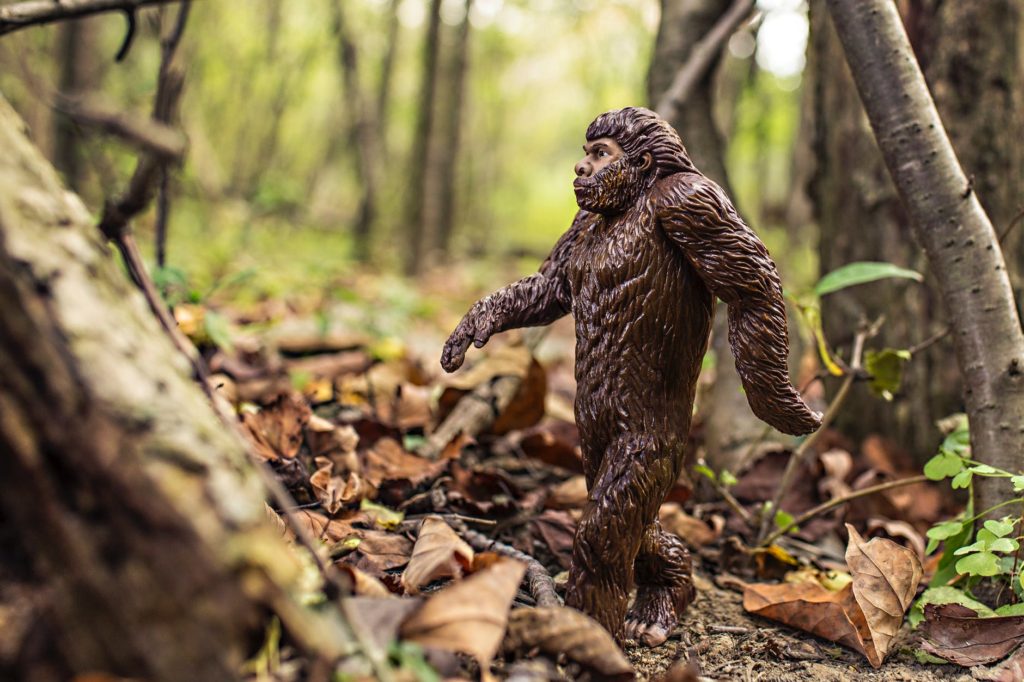There are no items in your cart
Add More
Add More
| Item Details | Price | ||
|---|---|---|---|
{{8/03/2022}
Bigfoot, sometimes known as Sasquatch, is a legendary creature that many in North America claim to have spotted in the wilderness. Let’s take a look at how the legend of Bigfoot came to be, and how it has endured in the American imagination.
On August 27, 1958, a bulldozer operator by the name of Jerry Crew made a shocking discovery. Mr. Crew worked for a logging company and was using a bulldozer to clear stumps and brush near Bluff Creek, about 300 miles north of San Francisco. He stopped his work, and told his colleagues that he had found humongous footprints in the mud. Crew was surprised to discover that his fellow workers had seen those enormous footprints as well. The loggers called the local paper to spread word of their discovery.
In the September 21st column, journalist Andrew Genzoli of the local Humboldt Times made note of a letter from a reader about the loggers’ sighting. At the time, Genzoli made light of the event, writing “Maybe we have a relative of the Abominable Snowman of the Himalyas.” However, the story had gained so much interest that by October 5th, the Humboldt Times published a story with the headline “Giant Footprints puzzle residents along Trinity River.” The story that followed contained the first recorded use of the name “Big Foot.”
Sadly though, the story turned out to be a hoax. In 2002, when Crew’s co-worker Ray Wallace passed away, Wallace’s family revealed that Wallace had made the footprints by stomping in the mud with large, carved wooden feet. “It was all just a joke,” his family had said. By this time, the legend of Bigfoot had captured the imagination of too many Americans. Bigfoot would not go quietly into the night.
Sightings of large, half-men, half-ape creatures have been reported all over the world. The native tribes of British Columbia called the creature ‘Sesquac,’ which means ‘Wild Man.’ This name has been transformed in English into ‘Sasquatch’ a term that people in the Pacific Northwest use for Bigfoot.  However you call it, the creature is normally described as walking on two legs, covered in hairy fur, and between 8-12 feet tall. This massive recluse is said to weigh as much as 800 pounds and can leave footprints that are twice the size of a normal man’s. Many people who believe in Bigfoot claim that it is the “missing link” in evolution between modern man and our simian ancestors. The Bigfoot Field Researchers’ Association (BFRO) has listed more than 5,000 Bigfoot, with about one third of those happening in the Pacific Northwest. These sightings have been recorded in every state except for Hawaii.
However you call it, the creature is normally described as walking on two legs, covered in hairy fur, and between 8-12 feet tall. This massive recluse is said to weigh as much as 800 pounds and can leave footprints that are twice the size of a normal man’s. Many people who believe in Bigfoot claim that it is the “missing link” in evolution between modern man and our simian ancestors. The Bigfoot Field Researchers’ Association (BFRO) has listed more than 5,000 Bigfoot, with about one third of those happening in the Pacific Northwest. These sightings have been recorded in every state except for Hawaii.
There have been other hoaxes involving Bigfoot since the prank played by the loggers in 1958. In 2008, two men from Georgia claimed to have recovered a corpse of a Bigfoot in their local mountains. After a frenzy of worldwide media, it was discovered that the two men (one a former police officer) had bought a Bigfoot costume and stuffed it with roadkill and animal guts.
 In 1967, two men by the name of Roger Patterson and Bob Gimlin made a one minute film that supposedly showed the same ape-like creature walking around the original Bluff Creek site. Many years later, a costume designer named Phillip Morris said that he sold Patterson an ape costume. Morris then introduced a large man who said he got paid to walk around in the costume at the Bluff Creek site.
In 1967, two men by the name of Roger Patterson and Bob Gimlin made a one minute film that supposedly showed the same ape-like creature walking around the original Bluff Creek site. Many years later, a costume designer named Phillip Morris said that he sold Patterson an ape costume. Morris then introduced a large man who said he got paid to walk around in the costume at the Bluff Creek site.
While there is no scientific evidence that a Bigfoot creature exists, thousands of people still believe it is out there somewhere. One nature writer who studied Bigfoot enthusiasts concluded that they just wanted to be out in the woods “These guys don’t want to find Bigfoot – they want to be Bigfoot!” he wrote. Other writers see Bigfoot as a symbol of freedom from the modern world, a creature that can roam freely and makes the wilderness a still-mysterious place to be.
{{Brett M.}}
Founder of LingoMetro, Brett lives in Seattle with his wife and cat, Tippee.